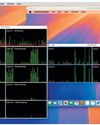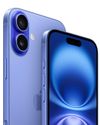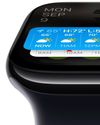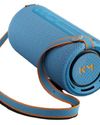
The first commercially available folding OLED smartphone was the Royole FlexPai, and it was absolutely terrible.
It seems as if 2020 will be the year of the fold and the roll. Motorola’s rebooted Razr phone comes with a foldable display and a price of around £1,500, while Samsung’s Galaxy Fold has a bigger screen and price tag: it’s £1,800. Both the screen and its price fade into insignificance next to LG’s OLED TV R9 – a 65-inch 4K TV that rolls away completely and will cost an estimated sixty thousand dollars.
How do you make a display that folds? With some difficulty. We’ve been promised flexible, foldable displays for years but it’s taken a long time for them to become practical. Part of that is because we had to wait for OLED.
OLED (Organic Light-Emitting Diode) displays differ from traditional LED displays because each pixel produces its own light. In non-OLED displays, the pixels don’t: LEDs produce a backlight which is projected through them and onto the screen, which is usually glass. Even the cleverest smartphone glass is not currently famed for its flexibility. Not only that, but the backlight would make things harder because it also has to flex – and it has to flex in a way that keeps the light to the pixels consistent. It turns out that trying to achieve that is a real pain in the glass.
OLED takes that pain away, because you can print the OLEDs onto a sheet of plastic – and plastic bends. The iPhone X used “innovative folding and circuit stacking technology” to bend the edges of its display into the corners and software to remove visual distortion – but only to a very limited extent.
This story is from the June 2020 edition of MacFormat UK.
Start your 7-day Magzter GOLD free trial to access thousands of curated premium stories, and 9,000+ magazines and newspapers.
Already a subscriber ? Sign In
This story is from the June 2020 edition of MacFormat UK.
Start your 7-day Magzter GOLD free trial to access thousands of curated premium stories, and 9,000+ magazines and newspapers.
Already a subscriber? Sign In

Mac hardware
We help to solve your hardware hassles, from interrupted upgrades to running diagnostics

Give your iPhone a whole new look in iOS 18
Make your iPhone uniquely you

iPhone 16
Apple Intelligence-ready smartphone for the rest of us

Apple Watch Series 10
10th anniversary Watch is now slimmer with an even bigger display

AirPods 4
Apple's most affordable AirPods remain a brilliant buy

We. HEAR Pro
Room-filling sound from this stylish wireless speaker

HiDock H1
An impressive 11-port AI audio dock for conferencers

Adobe Premiere Elements 2025
Create eye-catching videos for sharing on social media

Photoshop 2024
Your imagination is the limit with this AI-powered pixel creator

Wispr Flow
Bring the power of AI dictation to DMs, documents and Discord chats